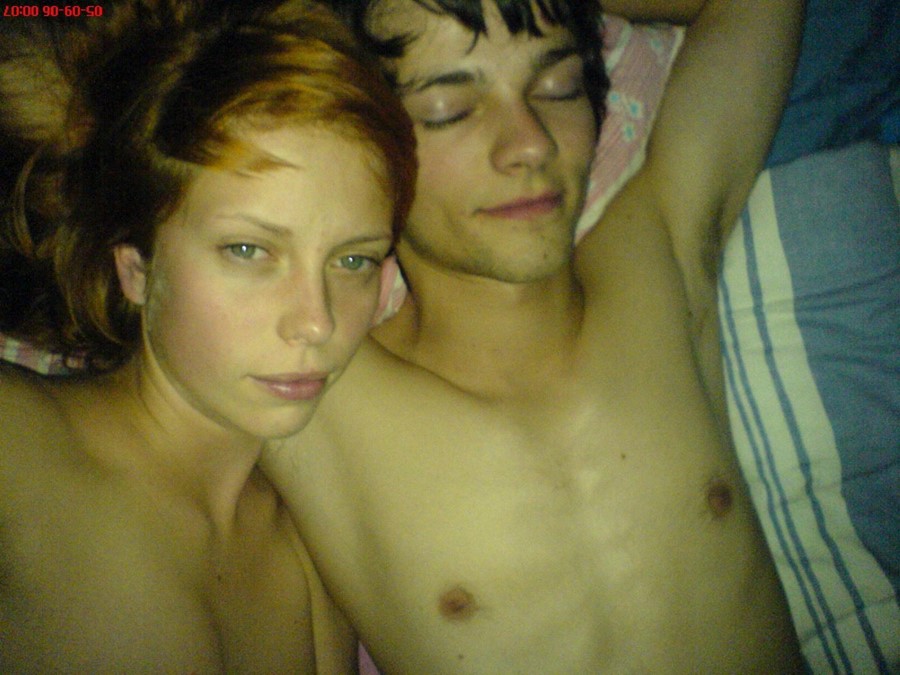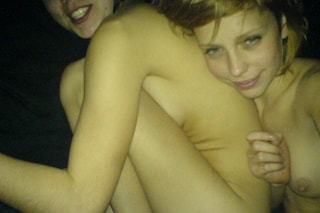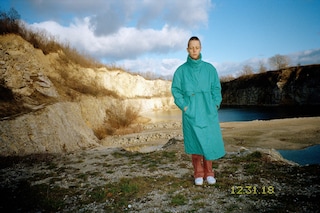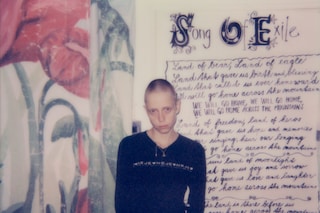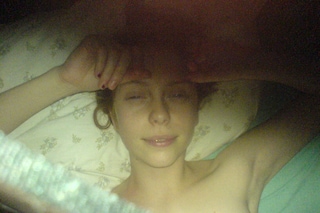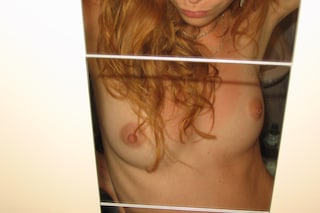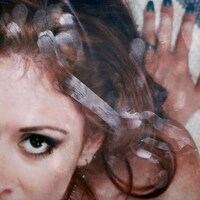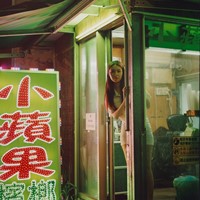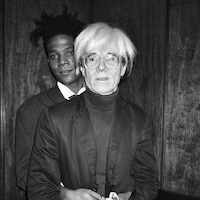The Czech photographer’s new exhibition, Nothing Compares to You, rakes over the deeply intimate and defining moments of growing up, leaving, home and starting a new life in the US
Leaving the farm she grew up on, in a rural border town in the Czech Republic, Marie Tomanova embarked on what she hoped would be a career in painting. Moving to the city to attend art college felt like the defining event she’d been moving inexorably towards her whole adolescence. And it was. But not in the way she’d anticipated…
What Tomanova actually encountered as a student in Brno was total disillusionment: “In the beginning, there was enthusiasm and hope when my admission letter for the art school in Brno arrived in the mail. I dreamt of being an artist and this was the promise of new beginnings. But my naive dreams faded during my studies and, after graduation, I felt that I would never be an artist,” Tomanova tells Dazed. “The frustration of gender inequality at university and feeling of failure indirectly led me to photography. It was during my studies to be a painter that I picked up a camera. It was an escape to personal and creative freedom. Hundreds of photos were taken before I left for the USA and knowingly turned to photography.”
Now an acclaimed photographer based in New York, Tomanova is returning to Brno as her exhibition Nothing Compares To You opens at the city’s OFF/Format Gallery. Alongside images made when she’d arrived in the US, the work on display documents her early experimentations with photography, including Live for the Weather – a never-before-exhibited series composed of images taken between 2005 and 2010. Tomanova explains, “Live for the Weather is from the thousands of photographs I took with a small digital and cellphone camera in the Czech Republic, especially in Brno, while wanting to be a painter and really failing. I was inspired to visit this archive of work and create a new film piece, Youth is Dark (2022).” The film, which is also featured in the exhibition, distills a dark spell in her adolescence. “It is 75 images from during the time I was in and out of love, struggling to belong in my own home, experiencing my own youth in a very real and unvarnished way,” she says. ”Looking back, it hurt.”
The exhibition’s curator Thomas Beachdel reflects on the personal and professional magnitude of Tomanova’s return to Brno: “In a way, a very significant way, while Tomanova has exhibited extensively internationally, to show in Brno may be most significant because it closes a circle that began there over a decade ago with the aspirations and dreams of a young girl who went there to become an artist, but left there so disillusioned. Brno may be one of the most critical, if not the most critical, dot on the map of Tomanova’s constellation. It may be that nothing compares to Brno as the point of reference for the formation of what has become an almost epic attempt at tracing the self and overcoming adversity.”
Below, we talk to Marie Tomanova about the sexism and adversity she encountered as an art student, how it felt to revisit her archive of photographs from more traumatic times, and returning to a site of such profound personal significance.
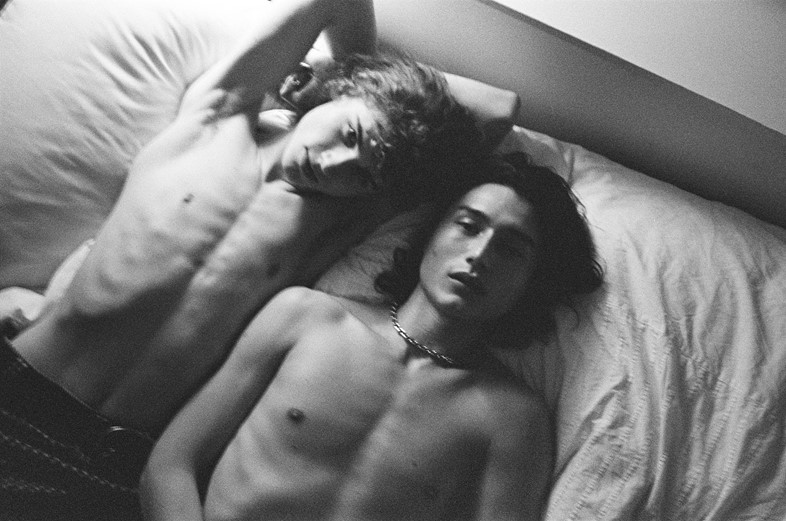
Could you introduce the distinct bodies of work featured in this exhibition?
Marie Tomanova: This show contains several distinct bodies of work, from Live for the Weather which was shot in the Czech Republic between 2005-2010 before I left for the United States to the early self-portrait work created in the US between 2014 and 2016.
It Was Once My Universe (2018-19) is the project about my first return to my family farm after living undocumented in the United States and being unable to return home for over eight years. Images from New York New York, my most recent publication [Hatje Cantz, 2021], create a portrait of place and a landscape of youth.
For me, putting this show together for Brno – the place I went with such dreams and innocence as a young girl to go to art school and yet was crushed by the misogyny of the system – has been very emotional, almost without knowing it. I have been anxious, I have been scared, I feel small like I used to, and yet I have to let myself be seen, to be exposed in a way – to show my scars. That is the power of place and it is the power of the past. Sometimes we come right up against the two and this is evocative.
How would you characterise the aesthetic of these images?
Marie Tomanova: The images are very honest, direct, raw and, dare I say, ‘real’. I never alter my images. I do not crop and I don’t really retouch unless things need to be adjusted a little for print. This is really important to me as it feels more honest in a way. Maybe it is not, because all photographs are of just such a small moment in time, but it is important to me to be as true to that moment as possible. There are new Polaroid self-portraits in this show from 2014 that have never been seen before, and the thing that is special about Polaroids is that they emphasise exactly what they are – they seem as real as a photograph can get.
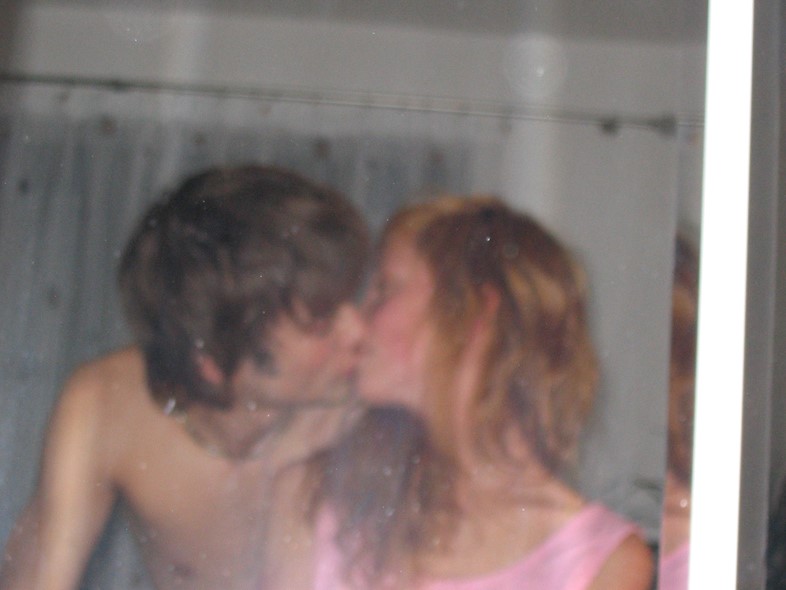
How did it feel to return to Brno, having become a successful artist in the US?
Marie Tomanova: It was really hard. One would think that coming here would feel triumphal, but what I have found is that I am still so conflicted. It is like when I went home after eight years to my hometown in 2018 (It Was Once My Universe), I thought I would be so relieved to be home, that it would be comfortable and easy. It was anything but. I felt more displaced there than I did in New York.
Does this exhibition feel like a resolution in any way?
Marie Tomanova: I don’t know yet. When I was at the Mikulov Symposium last year as a guest artist, I saw an old painting professor of mine from when I was in Brno – the one who ran the studio I was in and who was the one who treated me and really all of the women so horribly. None of us could be painters according to him… we could be objectified, used, put down, and laughed at, but we couldn’t become artists.
When he acknowledged me it was to comment not on the show that I had just hung, but to comment on my body, and to treat me with a lack of respect. This was done in front of the other artists and I was terrified – I froze, I didn’t know what to say. I confronted him the next day in the street. It took all of my courage and he still didn’t get it. The reason I say this is because yesterday, in relation to this show in Brno, someone wrote me that he had witnessed this treatment when I was in school and, while he didn’t recognise what was wrong with it at the time, he now does. And so that in itself feels like some sort of resolution, but it isn’t even really just for me, but perhaps more for us as humans.
Can you tell us about Youth Is Dark and the mood it conveys?
Marie Tomanova: The new piece, Youth Is Dark (2022) is a particularly reflective and personal work for me. I am looking back at my early photography in the place where it started and realising how difficult that period was. I included many self-portraits and, in a way, it is just another side or part of me. I am a happy person but, looking back I realise how much I have dealt with. My father died when I was 16, I went and lived with different sisters, and I fell in love very hard at 16 and that turned out to be a very hard relationship – I cried a lot. The images in Youth Is Dark are very low-res and feel particularly gritty but also magical. There is a feeling there, a very real and deep feeling.
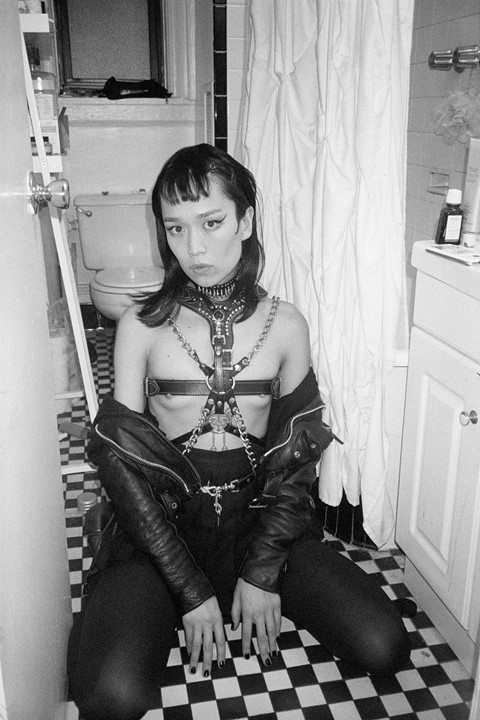
What are your enduring memories from the time when the photos were taken (the photos taken before you left Brno)?
Marie Tomanova: Every image carries a memory for me… revisiting it with this show, I get caught up in the emotion of looking back at it from such a far distance. And it is a distance that is rocky and difficult to navigate.
To look back on a fundamental period of your life can be difficult and challenging and, to a certain extent, this work is really all about that. I created Live for the Weather (2017) with images from the same era as Youth is Dark (2022), but the feeling of each is so different. Maybe that is because Live for the Weather was created when I was in New York City looking back at that period in my life when I was idealising my life in Czech, because New York can be so challenging sometimes. So, Live for the Weather seems so free to me. Youth is Dark was made in Brno looking back at my past and really feeling the weight of it, of the struggle that I don’t think I would’ve called a struggle at the time. It was just life. I think that memories lie like that. Nostalgia can be sweet or bitter.
And what are your memories of the photos you took while living in the US?
Marie Tomanova: When I look back at the images I took in the United States, I sometimes just cannot believe that I have done what I have done. Right before I left, I took a photo of Alessandro Michele and Jared Leto twinning and when I got to Brno, I thought to myself how far it is from this place to that – it seems impossibly far.
Meeting Ryan McGinley and having him come sit with me at my first show, Young American in 2018 was such a dream. And for him to sit and talk to me about my images like I was a real photographer was so instrumental for me in terms of seeing and believing in myself. Remember, in Brno, I was told I would amount to nothing, that girls couldn’t be artists – they could be objects for artists, but not artists. So that was the weight I carried. I knew it wasn’t true, but didn’t quite really believe it or feel it until Ryan gave me the validation he did with his time and love. That in a way is really the biggest memory.
Nothing Compares To You at OFF/Format Gallery in Brno is running until July 13, 2022
